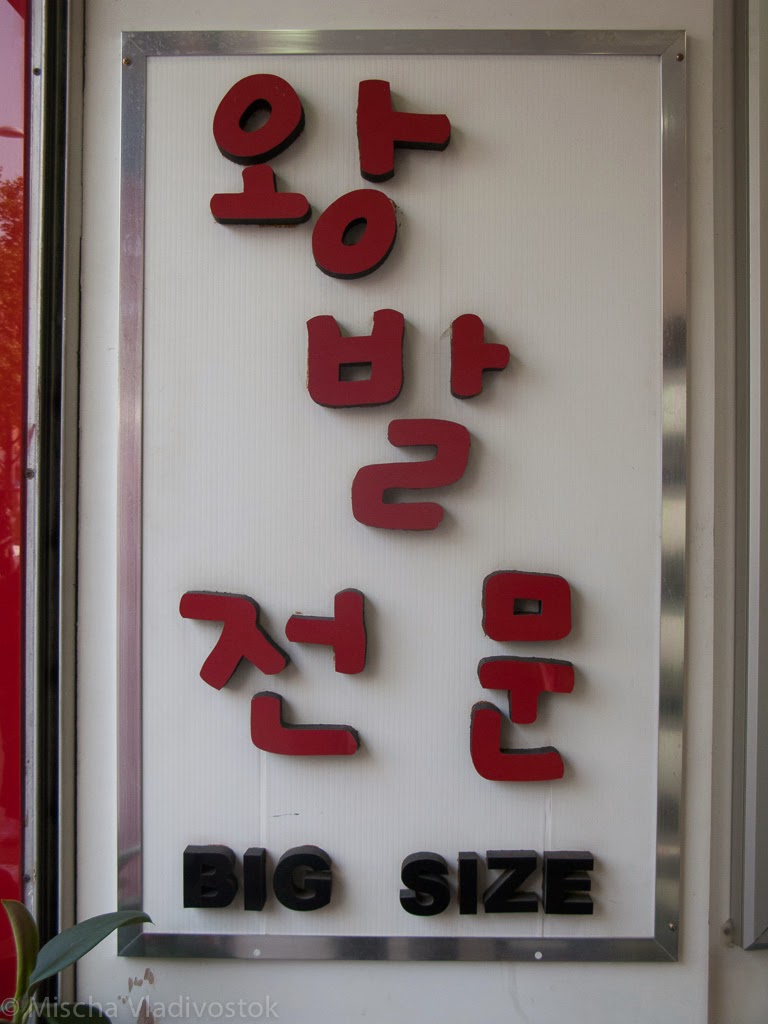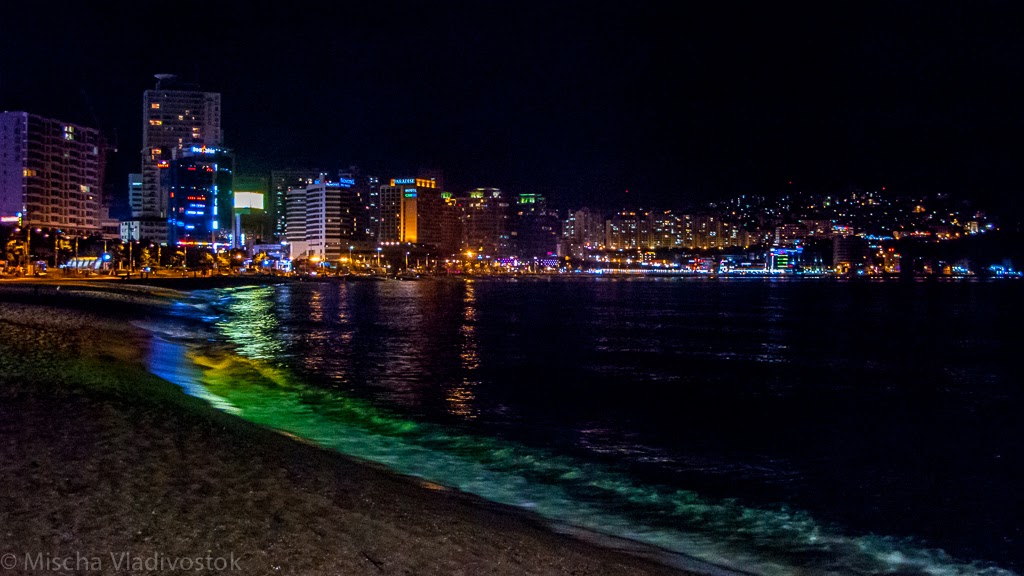In September 2011, I was very lucky to go to a conference in Seoul, South Korea. With the majority of my trips happening around Europe and/or Western countries, this was one I was really looking forward.
I spent over three weeks in Korea: a first week at the CIG conference, presenting my work, followed by a two week stay in Seoul National University, working as an invited researcher. Finally, I got a few days off at the end of my stay, and went to Busan (and then onwards to Japan - which I will report in a separate post).
It was a long way to get there; a Dublin-Amsterdam flight, followed by a 10h Amsterdam-Seoul. I finally got to fly in a 747, and it was a cool experience - what a massive plane!
The conference and then the stay at the University kept me pretty busy, and I didn't do half the travelling and exploring as I'd usually do. But I still got to explore quite a few interesting areas.
One of the top tourist spots in Seoul is the Insadong area, and it is well worth a visit. A pedestrian street, with many tiny side streets, stuffed with art galleries, vintage and souvenir shops, and traditional tea and coffee shops. I returned there quite a few times, just to wander around, buying a few souvenirs. Right next to it is Tapgol park, a lovely quiet place, with a 500 year old pagoda in a glass protective case.
While attending the conference, I stayed in a hotel, and got the chance to try the famous washlets, a combination of a toilet and a bidet, originally from Japan. These things are unreal: heated seat, automatic behind washing, water massage and drying, alternate positions for women's anatomy, and a thorough washing of the whole apparatus once you're finished. There's a whole range of programs and customisations to choose from. Sounds weird? Feels even weirder - but nice!
The final day of the conference offered us a chance to go to The Korea House, for the typical conference banquet (a wonderful dinner of traditional Korean food); that was followed by a traditional performance of light, music, and dance. It was a really enjoyable show.
Speaking of food, that was probably my biggest discovery in Korea. I wasn't quite fond of it at the start; practically every dish is spicy, and always comes accompanied with gimchi (fermented cabagge) and a whole range of other unidentifiable side dishes. But being five times cheaper than western food, I had little choice but to get used to it.
After a week with an upset stomach, I began enjoying it more and more. In fact, sometimes I had little choice but to adventure into unknown dishes; arriving into restaurants with no English menus nor pictures, I simply pointed at something someone else was eating. Interesting facts about Korean table sets: cuttlery is almost always metal (chopsticks and a long spoon), water is free and served in a reusable plastic bottle, and the glasses are always sterilised. Almost every restaurant has buzzers in the tables; ring it, and immediately 3/4 waiters acknowledge it and will come to you in less than a minute.
Towards the end of my stay, I had become really used to the majority of dishes; my favourite was the Korean bbq.
Towards the end of my stay, I had become really used to the majority of dishes; my favourite was the Korean bbq.
Most evenings I would take the metro downtown, to go discover yet another mysterious dish in an unknown restaurant. The metro is clean and quiet, hardly anyone speaks with each other (mostly people just watch TV in their mobile phones); in every station, there's gas masks, a reminder of the tensions with their Northern neighbours! After eating, I usually would wander around on foot, to enjoy the neon spectacle that most streets offer.
Considering the northern neighbours, no trip to South Korea is complete without an excursion to the DMZ (Korean Demilitarised Zone). It's a very touristy thing to do, and you can only go there with an excursion, complete with a guide, who tries (and fails) to make jokes. But it's still a site full of interesting spots, such as the Bell of Peace, the secret invasion tunnels, the bullet-riddled train, and the closed roads leading to the North.
You get to actually look into the North, courtesy of an observation deck, from which it is forbidden to take photos; behind the "no-photo" zone, people pile up trying to snap a shot. Far more interesting (if spooky) was the visit to Dorasan station. Located on the South-North train line, it has a whole area reserved for passenger trains to Pyeongyang, which is kept immaculately clean - yet was never used.
Back in the city, the Dongdaemun gate is one of only three original city gates still standing:
Next to it, is the equally famous Dongdaemun market. It is massive, with stalls in small and large streets sprawling in a huge city area. It is also open until 5am. Crazy motorcycle riders pile up merchandise on the back of their bikes, and speed through stalls and pedestrians at insane speeds.
Equally interesting is the Cheonggyecheon area. Once occupied by an elevated motorway which crossed the city, it was renovated into a pedestrian area, and it is a real pleasure to just walk along the small stream, hidden from the craziness of the world around it.
The University had great facilities, and I spent a good deal of time there, working with my wonderful host, Bob McKay. The location is impressive, in a hill on the south of the city.
Bob was fantastic. He took me for meals quite often, including an excursion to the fish market, where we ate some great fresh sushimi. On one of the days, I went with him and his wife to Ganghwa Island, on the Northwestern part of the country. We visited old temples, ate grilled octopus, and explored the beaches nearby.
That about sums it up for Seoul. Of less interest was the famous Yongsan electronics market (half the shops were closed, and the quality was far from great). Equally uninteresting was the Itaewon area: also known as "Western Town", I almost felt like I was back in a Western city, given the amount of western shops and restaurants, and foreigners on the street (it is particularly popular with U.S. Military personnel). It is apparently one of the few places where you can buy "U.S. sized" clothes:
I did save one of the best spots for last, however: on the last day, I visited the Gyeongbok Palace. It is a massive complex of several palaces, museums and pavilions, and you can easily spend a whole day exploring it. Be prepared to elbow your way through hordes of tourists (both national and foreign).
You get to actually look into the North, courtesy of an observation deck, from which it is forbidden to take photos; behind the "no-photo" zone, people pile up trying to snap a shot. Far more interesting (if spooky) was the visit to Dorasan station. Located on the South-North train line, it has a whole area reserved for passenger trains to Pyeongyang, which is kept immaculately clean - yet was never used.
Back in the city, the Dongdaemun gate is one of only three original city gates still standing:
Next to it, is the equally famous Dongdaemun market. It is massive, with stalls in small and large streets sprawling in a huge city area. It is also open until 5am. Crazy motorcycle riders pile up merchandise on the back of their bikes, and speed through stalls and pedestrians at insane speeds.
Equally interesting is the Cheonggyecheon area. Once occupied by an elevated motorway which crossed the city, it was renovated into a pedestrian area, and it is a real pleasure to just walk along the small stream, hidden from the craziness of the world around it.
The University had great facilities, and I spent a good deal of time there, working with my wonderful host, Bob McKay. The location is impressive, in a hill on the south of the city.
Bob was fantastic. He took me for meals quite often, including an excursion to the fish market, where we ate some great fresh sushimi. On one of the days, I went with him and his wife to Ganghwa Island, on the Northwestern part of the country. We visited old temples, ate grilled octopus, and explored the beaches nearby.
That about sums it up for Seoul. Of less interest was the famous Yongsan electronics market (half the shops were closed, and the quality was far from great). Equally uninteresting was the Itaewon area: also known as "Western Town", I almost felt like I was back in a Western city, given the amount of western shops and restaurants, and foreigners on the street (it is particularly popular with U.S. Military personnel). It is apparently one of the few places where you can buy "U.S. sized" clothes:
I did save one of the best spots for last, however: on the last day, I visited the Gyeongbok Palace. It is a massive complex of several palaces, museums and pavilions, and you can easily spend a whole day exploring it. Be prepared to elbow your way through hordes of tourists (both national and foreign).
Busan.
My last 2 days in Korea were spent in Busan, on the Southeast part of the country. The second largest city of Korea, it is quite touristy as well, especially being on the sea shore, but it is in no way as massive as Seoul, and does feel a lot more welcoming. I took a high-speed train (French TGVs!) to get there.
I stayed in a wonderful little peace of heaven: a small hostel named after the owner, "Chan's House". Chan is obsessed with India, having travelled and lived there several times, and the home décor reflects that - all the way to a sitar in the living room, and mantras in the toilet sound system! (yes I brought some copies)
I went out that night, to explore the nightlife by the waterfront.
The next day was mostly spent in markets. I started with the Jagalchi Fish Market, wandering amongst the hundreds of stalls selling live, dead and cooked fish, from easily recognisable varieties such as sole, sea bass, shark, octopus, to strange, unknown creatures of the sea, including spoon worms. These are meant to be a real delicacy, served still wriggling on your plate. They are sometimes known as the penis fish. Go figure why.
I wasn't that brave, but I did have a baby tiger shark in sashimi for lunch, after finding a fisherman that could speak English, and having a lovely chat with him. The way it was killed, two hard blows to the head, followed by chopping and straight to my plate, felt somewhat cruel. Not nearly as cruel as the fate of eels: skinned alive, they are left twitching in agony and pain, before being chopped alive. Not for the faint of heart.
I spent the whole afternoon lost in the tiny shopping streets of the Gukje and surrounding markets. I found it even more interesting than the Seoul markets; tiny little streets where you just get lost (I did, several times), exploring all the merchandise, from cheap clothing to unknown dishes.
My last evening in Korea was spent on Yongdusan Park, one of the highest points of the city. I didn't bother climbing the Busan Tower, and instead just wandered around the park, and sat admiring a group of ukulele players, trying as hard as possible to play together and sing Western songs.
That was it. The next day I took the ferry to Osaka, Japan, which I will tell about in a different post. Sometimes surprising, sometimes a bit hard, my glimpse at life in Korea was very pleasant.










































No comments:
Post a Comment